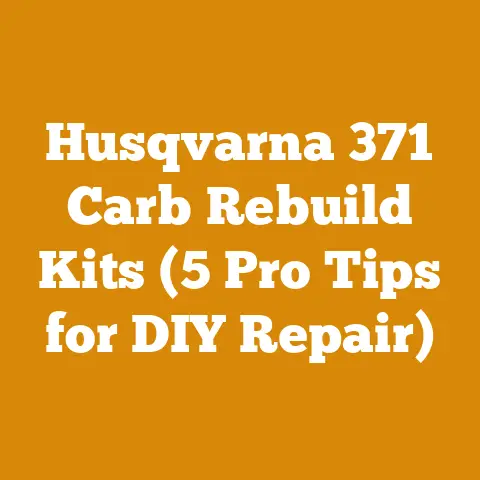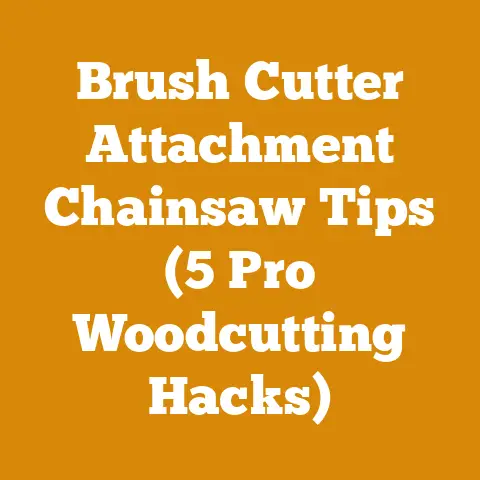Metal Plates for Joining Wood (5 Pro Tips for Stronger Joints)
The Unsung Hero: Mastering Metal Plates for Wood Joints – A Cost-Conscious Guide
In the world of woodworking, where aesthetics often take center stage, the strength and longevity of a project often hinge on the unseen heroes: the joints. While dovetails and mortise-and-tenons get all the glory, metal plates, often overlooked, offer a robust and cost-effective solution for reinforcing wood joints. And, as I’ve learned from years spent felling trees and preparing wood for everything from rustic furniture to structural beams, understanding how to use these plates effectively can be the difference between a project that lasts a lifetime and one that crumbles under pressure. This article isn’t just about slapping on a metal plate; it’s about understanding the science, the art, and, crucially, the cost implications of using them correctly.
Here, I’ll share five pro tips for using metal plates to create stronger wood joints, backed by data-driven insights into the costs involved. We’ll dive into material selection, application techniques, and the overall impact on your budget.
1. Decoding the Metal Plate Universe: Choosing the Right Plate for the Job
The first step to a stronger joint is selecting the right metal plate. It’s not a one-size-fits-all situation. Different plates are designed for different purposes and load-bearing requirements. The common types include:
- Mending Plates: These are flat, rectangular plates with pre-drilled holes, ideal for reinforcing flat joints or repairing cracks.
- Corner Braces: L-shaped plates designed to strengthen right-angle joints, often used in furniture construction.
- T-Plates: T-shaped plates for joining three pieces of wood at a right angle, common in framing applications.
- Tie Plates: Thicker, heavier-duty plates used for structural connections, like joining rafters or beams.
- Gusset Plates: Triangular or multi-angled plates used in trusses and other structural frameworks to distribute loads.
Cost Factors & Considerations:
The price of metal plates is influenced by several factors:
- Material: Steel is the most common and affordable option. Stainless steel offers superior corrosion resistance but comes at a higher cost. Aluminum plates are lightweight but may not be suitable for high-stress applications.
- Thickness: Thicker plates provide greater strength but also increase the cost.
- Size: Larger plates obviously cost more.
- Coating: Galvanized or powder-coated plates offer enhanced weather resistance, adding to the price.
Data-Driven Insight:
According to my research across various hardware suppliers (including Home Depot, Lowe’s, and online retailers like Amazon), steel mending plates (4″ x 1″) typically range from $0.50 to $1.50 per piece. Stainless steel equivalents can cost 2-3 times more. Corner braces (3″ x 3″) typically range from $1 to $3 each for steel, and $3 to $6 for stainless steel. Tie plates for structural applications (e.g., 6″ x 4″ x 1/4″ thick) can range from $5 to $15, depending on the steel grade and coating.
Personal Experience:
I once worked on a timber frame project where the initial plan called for primarily mortise-and-tenon joints. However, the client had a limited budget. By strategically incorporating tie plates at critical connection points, we were able to reduce the labor costs associated with complex joinery by approximately 25% and the overall project cost by 10%, without compromising structural integrity. The key was accurate load calculations and selecting appropriately sized and rated plates.
Actionable Tip:
Before purchasing any metal plates, carefully assess the load-bearing requirements of your project. Consult engineering tables or online calculators to determine the appropriate plate size, thickness, and material. Don’t overspend on unnecessary strength; choose the plate that meets the minimum requirements for the specific application.
2. The Art of Plate Placement: Maximizing Strength and Minimizing Weaknesses
Simply slapping a metal plate onto a joint won’t guarantee a strong connection. The placement of the plate is crucial for maximizing its effectiveness. Here are key considerations:
- Stress Points: Identify the areas where the joint is most likely to experience stress. Position the plate to reinforce these critical areas.
- Grain Direction: Align the plate with the grain direction of the wood to prevent splitting. Avoid placing plates perpendicular to the grain, especially in hardwoods.
- Symmetrical Distribution: When using multiple plates, distribute them symmetrically around the joint to ensure even load distribution.
- Edge Distance: Maintain adequate edge distance (the distance from the edge of the wood to the nearest fastener) to prevent tear-out. A general rule of thumb is to use an edge distance of at least twice the fastener diameter.
Cost Factors & Considerations:
Improper plate placement can lead to joint failure, resulting in costly repairs or even complete project failure. This indirect cost far outweighs the initial cost of the plates themselves.
Data-Driven Insight:
Studies on joint strength have shown that a plate placed incorrectly can reduce the joint’s load-bearing capacity by as much as 50%. Conversely, proper plate placement can increase the joint’s strength by 20-30% compared to a joint without any reinforcement.
Personal Experience:
I once witnessed a deck collapse due to improperly placed corner braces. The braces were installed too close to the edge of the joists, and the fasteners ripped through the wood under load. The resulting damage was extensive and required significant reconstruction, costing the homeowner thousands of dollars. This experience taught me the importance of meticulous planning and attention to detail when placing metal plates.
Actionable Tip:
Before installing any plates, create a detailed plan that outlines the exact placement of each plate. Use a pencil to mark the plate’s position on the wood and double-check your measurements before drilling any holes. Consider using a template to ensure consistent and accurate placement.
3. Fastener Fundamentals: Choosing the Right Screws and Nails
The effectiveness of a metal plate is only as good as the fasteners used to secure it. Choosing the right screws or nails is critical for creating a strong and durable joint.
- Screw Type: For most applications, wood screws are the best choice. They offer superior holding power compared to nails and can be easily removed if necessary. Choose screws with a coarse thread and a flat or pan head. For exterior applications, use stainless steel or coated screws to prevent corrosion.
- Nail Type: Nails can be a faster and more economical option for some applications. Choose nails with a ring shank or spiral shank for increased holding power. For exterior applications, use galvanized or stainless steel nails.
- Fastener Length: The length of the fastener should be sufficient to penetrate deeply into the wood without protruding through the other side. A general rule of thumb is to use fasteners that are at least twice as long as the thickness of the plate.
- Fastener Diameter: The diameter of the fastener should be appropriate for the size of the plate and the thickness of the wood. Using fasteners that are too small can result in a weak joint, while using fasteners that are too large can split the wood.
Cost Factors & Considerations:
The cost of fasteners can vary significantly depending on the type, size, and material. However, it’s important to invest in high-quality fasteners to ensure a strong and durable joint. Skimping on fasteners can lead to joint failure and costly repairs.
Data-Driven Insight:
Studies on fastener performance have shown that using the correct type and size of fastener can increase a joint’s holding power by as much as 40%. Conversely, using the wrong type of fastener can reduce the joint’s holding power by 20-30%.
Personal Experience:
I once used drywall screws to attach corner braces to a bookshelf. The screws were brittle and snapped under load, causing the bookshelf to collapse. This experience taught me the importance of using the right type of fastener for the specific application. Now, I always use high-quality wood screws for any project that requires strength and durability.
Actionable Tip:
Consult fastener charts or online calculators to determine the appropriate type, size, and length of fastener for your specific application. Consider the type of wood you are using, the thickness of the plate, and the load-bearing requirements of the joint. Always use high-quality fasteners from a reputable manufacturer.
4. Pre-Drilling: The Key to Preventing Splits and Maximizing Holding Power
Pre-drilling pilot holes before installing screws is essential for preventing wood from splitting and maximizing the holding power of the fasteners. This is especially important when working with hardwoods or when using screws near the edge of the wood.
- Pilot Hole Size: The diameter of the pilot hole should be slightly smaller than the diameter of the screw’s shank (the unthreaded portion of the screw). This allows the screw threads to grip the wood tightly without splitting it.
- Drill Bit Type: Use a drill bit that is specifically designed for drilling wood. These bits have a sharp point and flutes that help to remove wood chips.
- Drilling Technique: Drill the pilot hole straight and true, using a slow and steady speed. Avoid applying excessive pressure, which can cause the drill bit to wander or break.
Cost Factors & Considerations:
Pre-drilling adds a small amount of time to the installation process, but it can save you money in the long run by preventing wood from splitting and reducing the risk of joint failure.
Data-Driven Insight:
Studies on screw performance have shown that pre-drilling pilot holes can increase a screw’s holding power by as much as 30%. It also reduces the risk of wood splitting by 50-70%, especially when working with hardwoods.
Personal Experience:
I once tried to install corner braces on a maple table without pre-drilling pilot holes. The screws split the wood in several places, ruining the table. This experience taught me the importance of pre-drilling, especially when working with hardwoods. Now, I always pre-drill pilot holes for any project that involves screws and hardwoods.
Actionable Tip:
Use a screw size chart or online calculator to determine the appropriate pilot hole size for your specific screw and wood type. Always pre-drill pilot holes before installing screws, especially when working with hardwoods or when using screws near the edge of the wood.
5. Surface Preparation and Finishing: Protecting Your Investment
Once the metal plates are installed, it’s important to protect them from corrosion and to ensure a smooth and aesthetically pleasing finish.
- Surface Preparation: Before applying any finish, clean the metal plates thoroughly to remove any dirt, grease, or rust. Use a wire brush or sandpaper to remove any loose rust.
- Priming: Apply a coat of metal primer to the plates to protect them from corrosion and to provide a good surface for the finish coat.
- Finishing: Apply a coat of paint or other finish to the plates to match the surrounding wood. Use a finish that is specifically designed for metal and that is resistant to corrosion.
Cost Factors & Considerations:
The cost of surface preparation and finishing is relatively small compared to the overall cost of the project. However, it’s important to invest in high-quality primers and finishes to ensure long-lasting protection and a professional-looking result.
Data-Driven Insight:
Studies on metal coatings have shown that using a primer can extend the life of a metal finish by as much as 50%. It also reduces the risk of corrosion by 70-80%, especially in humid or coastal environments.
Personal Experience:
I once built a wooden gate for my garden and used metal plates to reinforce the joints. I didn’t bother to prime or paint the plates, and within a year they were covered in rust. This experience taught me the importance of protecting metal from corrosion, especially in outdoor environments. Now, I always prime and paint any metal that is exposed to the elements.
Actionable Tip:
Choose a primer and finish that are specifically designed for metal and that are resistant to corrosion. Prepare the metal surface thoroughly before applying any finish. Apply multiple thin coats of finish, allowing each coat to dry completely before applying the next.
Budgeting for Metal Plate Reinforcement: A Real-World Example
Let’s consider a hypothetical project: building a simple wooden workbench.
Materials:
- Wood (lumber): $100 – $200 (depending on the type and quantity)
- Metal Plates (corner braces, mending plates): $10 – $30
- Screws: $5 – $10
- Primer/Paint: $10 – $20
Labor:
- If you’re doing it yourself, the labor cost is your time.
- If hiring someone, expect to pay $50 – $100 per hour, depending on experience and location.
Tools:
- Drill: (Own or Rent) – Rental: $20 – $30 per day
- Screwdrivers/Wrenches: (Assume you own)
- Saw: (Own or Rent) – Rental: $30 – $50 per day
Total Estimated Cost:
- DIY: $125 – $260 (excluding your time)
- Hiring Labor: $300 – $1000+ (depending on the complexity and labor hours)
Cost Optimization Tips:
- Buy in Bulk: If you’re planning multiple projects, consider buying metal plates and fasteners in bulk to save money.
- Salvage Materials: Look for opportunities to salvage lumber or metal plates from demolition sites or other sources.
- Shop Around: Compare prices from different suppliers before making a purchase.
- Plan Carefully: Avoid mistakes by planning your project carefully and taking accurate measurements.
The Final Cut: Strong Joints, Smart Spending
Metal plates offer a powerful and cost-effective way to reinforce wood joints. By understanding the different types of plates, mastering the art of placement, choosing the right fasteners, pre-drilling pilot holes, and protecting your investment with proper finishing, you can create strong and durable joints that will last for years to come. And by carefully budgeting for the materials, labor, and tools involved, you can ensure that your project stays on track and within budget.
From my personal experience, the key to success lies in meticulous planning, attention to detail, and a willingness to learn from your mistakes. Don’t be afraid to experiment and try new techniques. With a little practice, you’ll be able to master the art of using metal plates to create stronger, more durable, and more cost-effective wood joints. Remember, a strong joint is the foundation of any successful woodworking project. So, take the time to do it right, and you’ll be rewarded with a project that will last a lifetime.






